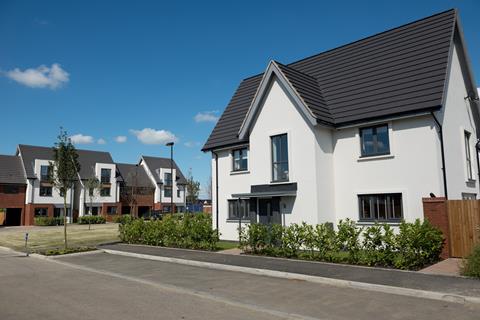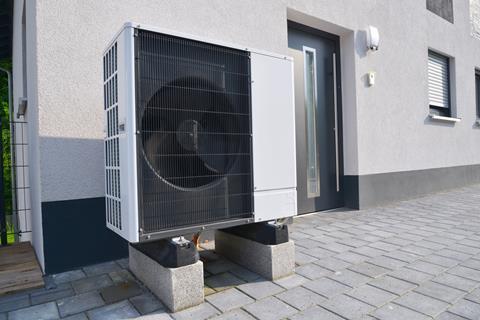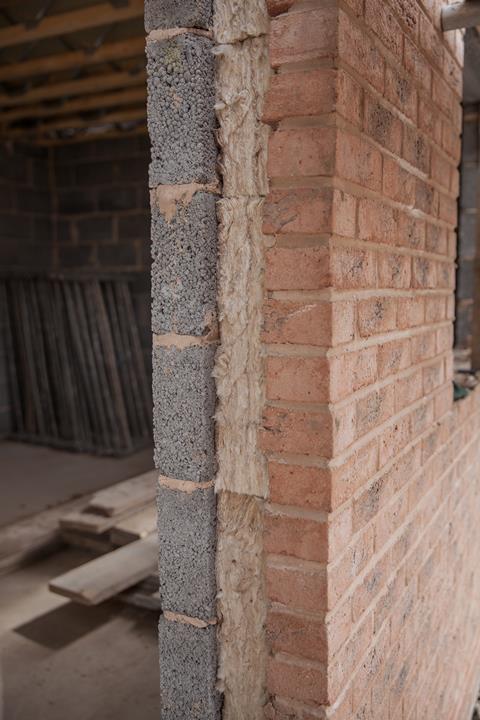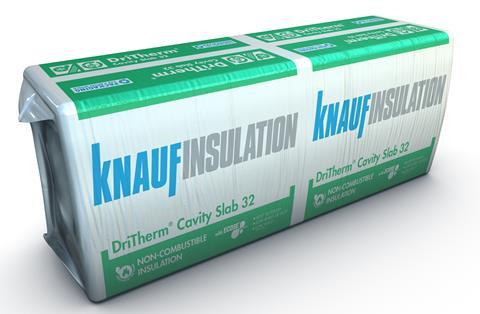James Hulbert, Head of Housing and Offsite for Knauf Insulation, discusses the growing use of heat pumps and what housebuilders can do to optimise their homes for the technology
Over the last couple of years energy efficiency has risen up the agenda for both policy makers and housebuilders. Updates to Part L of the Building Regulations for England have introduced tighter fabric efficiency standards and housebuilders must now deliver a 31% reduction in operational carbon for all new homes.

Homeowner awareness is also increasing, as reflected in a recent survey by Knight Frank in which 86% of respondents rated energy efficiency as either “important” or “very important”.[1] Momentum around the topic is growing and with the Future Homes Standard just around the corner, that’s only going to continue.
Alongside insulation, low and zero carbon technologies like heat pumps are at the forefront of the conversation. Building Regulations don’t yet mandate their use, but Part L does require housebuilders to analyse the “feasibility of using high-efficiency alternative systems” in the design of new homes.[2]
This will of course become more urgent as we approach 2025, when it’s likely that no new homes will be fitted with gas boilers.[3]

The government has also funded the Electrification of Heat Demonstration Project, to show the feasibility of a large-scale heat pump roll-out, suggesting the technology will become widespread, and possibly a regulatory requirement, for future developments.[4]
So, how can housebuilders ensure their homes are heat pump ready?
Specifying to size

Heat pumps come in different sizes and with different capacities, so it’s important to select the right model for the space that’s being heated. For example, if a heat pump is too small, the space won’t reach or maintain the desired temperature. It seems like a simple enough thing to get right, and it is – on paper.
But the difficulty comes when a home’s fabric is inefficient.
When heat is lost through the building envelope, the boundary of the space is increased. The heat pump effectively becomes “too small”, even if it was specified correctly in the design. For the occupier, the result is wasted heat, higher energy bills, and a colder home.
Real performance
A well-insulated building envelope preserves the indoor environment, allowing heating systems to work effectively. The same fabric first approach is equally important when optimising for cooling technologies during the summer months.

But whatever the season, success always comes from specifying insulation that delivers its designed thermal performance under real world conditions, not just on paper.
Lambda and U-values are a good indicator of a product’s theoretical performance but it’s also important to consider the impact of correct installation. In reality, some types of insulation are easier to install correctly than others.
For example, if a wall cavity is not perfectly uniform and flat, rigid board insulation won’t sit flush against it. This can lead to unintentional air gaps, which compromise thermal performance. Rigid boards also need to be cut to size and their joints taped with precision, adding further opportunities for human error.
Mineral wool insulation is different. Products like Knauf Insulation’s DriTherm® Cavity Slabs are flexible, allowing them to adapt to minor imperfections in the substrate and fully fill the cavity. Where the edges of two slabs meet, the strands also “knit” together, minimising gaps and maximising performance.
In short, insulation that performs as-designed enables heat pumps to perform as-designed.

In-use measurement

Once a home has been optimised for energy efficiency, the next step is to measure the results. The running costs of a home and the occupants’ comfort throughout the year are pretty good indicators of its energy performance.
But soon this will be even more quantifiable.
The government has already laid out its Energy Performance Certificate (EPC) Action Plan, which states that EPCs must “move from a reflection of the features of a building to a true measure of ‘in-use’ building performance”.[5]
This intention to shift from notional to real world energy measurement is also echoed by government funded projects to develop technologies that measure the energy performance of occupied homes. A good example is Knauf Energy Solutions’ sensor technology, which measures energy efficiency in the same way as energy generation.[6]
The means for in-use energy measurement already exist and it’s only a matter of time before they become more widely available. When that happens, housebuilders will have the potential to benchmark their homes’ fabric performance, to inform future builds.
The move to using heat pumps is already underway and as energy regulations continue to tighten, their popularity will only increase. Being heat pump ready means taking a ‘fabric first’ approach and choosing products like mineral wool insulation that perform as-designed. And with in-use energy measurement right around the corner, it won’t be long until we can see the results for ourselves.
For free resources on Part L and the wider housebuilding sector, visit Knauf Insulation’s Housebuilders Hub.
References
[1] Knight Frank survey: https://www.knightfrank.com/research/article/2021-12-21-green-homes-gaining-ground-with-home-buyers
[2] Approved Document L: https://www.gov.uk/government/publications/conservation-of-fuel-and-power-approved-document-l
[3] Committee on Climate Change: https://www.theccc.org.uk/publication/uk-housing-fit-for-the-future/
[4] EHD Project: https://www.gov.uk/government/publications/electrification-of-heat-demonstration-project-successful-bids
[5] EPC Action Plan: https://assets.publishing.service.gov.uk/government/uploads/system/uploads/attachment_data/file/922660/EPC_Action_Plan.pdf
[6] Knauf Energy Solutions: https://www.knaufenergy.com/









